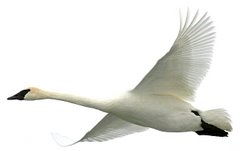400mm lens experiment -- I
After yesterday's post, I received a number of comments and got involved discussing my Canon 300mm & 400mm lenses. I wrote that quite often I wasn't happy with the results from the 300/4 IS lens but I used it because of image stabilization; I've had problems handholding the 400/5.6 lens which does not have IS.
I then started thinking that perhaps I should try to handhold the 400 again using faster ISOs and, consequently, faster shutter speeds. I put this theory to practice this morning at Springbrook.
All of the photos are with the 400mm lens wide open at f/5.6; all are at ISO 1600, which accounts for some of the "grain." All are handheld, sometimes resting against a tree or bridge railing, if one was handy. The shutter speeds ranged from about 1/500 to 1/3000, depending upon the lighting. On some of the shots I did some sharpening during processing, but, hopefully, not to the point it becomes obvious.
Another technique I've read about is to shoot a number of sequential shots -- supposedly that increases your chances of getting more photos that are sharp. I used my Canon 20d which, in theory, shoots 6.5 frames per second; in practice I'm guessing it is more like 3 or 4 frames per second.

Some of the "grain" in this shot is due to the fact I underexposed and had to make up for it in editing. Otherwise, the sharpness is not too bad. This is from a sequence of 5 and was cropped to about 1/2 full frame.

Not the best composition, but the Cardinal is sharp to my eye. This is from a sequence of 10 and is cropped to 1/6 of full frame. "Grain" is less evident due to more light & better exposure.

This is full-frame from a sequence of 8.

This is full-frame from a sequence of 7. Overall, quite sharp though some of the leaves are out of focus due to shallow depth of field at f/5.6 with a 400mm lens.

This was the best shot out of 8; not too bad considering it is about a 1/6 crop from full-frame. Excessive grain, however, due to underexposure which had to be corrected during editing. It is obvious such corrections make photos considerably grainy when shot at ISO 1600.

This and the following are the best from about 24 shots. The back-lighting and out-of-focus shadows make the grain more obvious although this is full-frame.

This is about 1/2 of full-frame.
Overall, I am quite pleased with one aspect of this test, i.e., I can hold a 400mm lens steady enough provided my shutter speeds are above 1/500, preferably 1/1000 or faster. After these photos I lowered to ISO to 800 to see if I could still get sharp results. I will post those next.
In the meanwhile, I look forward to your comments, observations, criticisms, etc. re this informal, unscientific test.

